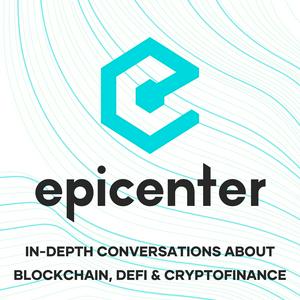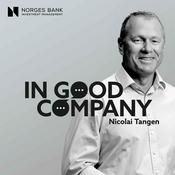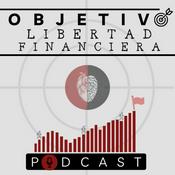Epicenter - Learn about Crypto, Blockchain, Ethereum, Bitcoin and Distributed Technologies

657 episodios

Will stablecoins end the US debt Crisis?
11/12/2025 | 54 min
Ethereum co-founder Joe Lubin joins Friederike Ernst to discuss why we are at the "end of a supercycle," a chaotic transition period where legacy institutions are finally adopting blockchain rails not just for efficiency, but for survival. They explore the "inevitable convergence" where the US government may actively rely on stablecoins to absorb debt, effectively using crypto to extend the lifespan of the dollar. At the same time, banks scramble to compete with self-custodial wallets. Joe also details the structural evolution of Consensys, from an "organic blob" incubating projects like Gnosis to a focused software powerhouse. He differentiates Linea from competitors by highlighting its commitment to permissionless innovation where anyone can deploy a rollup without a "sign-off". He shares his vision for MetaMask evolving into a user-owned "full-service bank. Topics00:00 Intro & Paradigm Shift04:15 Crypto-Anarchy vs. Enterprise10:30 Banks & Stablecoins16:00 The Economic Supercycle24:45 Consensys History & Spin-outs33:20 Linea & Decentralization42:15 L1 Scaling & ZK48:00 Permissionless Rollups55:30 Future OptimismLinksJoe Lubin on X: https://twitter.com/ethereumJosephConsensys: https://consensys.ioLinea: https://linea.buildMetaMask: https://metamask.ioGnosis: https://gnosis.io/ Sponsors: Gnosis: Gnosis has been building core decentralized infrastructure for the Ethereum ecosystem since 2015. With the launch of Gnosis Pay last year, we introduced the world's first Decentralized Payment Network. Start leveraging its power today at http://gnosis.io

What will Quantum Computing Change?
03/12/2025 | 1 h 21 min
Quantum computing is often dismissed as a distant sci-fi future, but Ethereum OG John Lilic and Oxford physicist Stefano Gogioso argue the timeline is shrinking fast with roadmaps converging around 2030. In this episode, they break down the "woeful" state of quantum readiness in crypto, explaining how Shor's algorithm could eventually shatter the elliptic curve cryptography protecting Bitcoin and Ethereum.They also explore the terrifying concept of "harvest now, decrypt later," which implies that encrypted data and privacy coins like Monero may essentially be compromised already. Finally, they introduce "Quantum Money," a revolutionary form of digital cash developed by Stefano’s startup NeverLocal, which relies on the laws of physics rather than blockchain consensus to prevent double-spending.Topics00:00 Intro03:00 John’s Quantum Awakening08:00 Defining Quantum Computing13:30 Logical Qubits Explained18:15 Crypto’s "Woeful" Readiness23:30 "Harvest Now" Threat28:45 Monero’s Privacy Risk33:15 What is Quantum Money?40:00 Investment & HedgingLinksJohn Lilic on X: https://x.com/LilicJohnStefano Gogioso on X: https://x.com/StefanoGogiosoNeverLocal: https://neverlocal.com Quantum.info: https://quantum.infoGnosis: https://gnosis.io/Sponsors: Gnosis: Gnosis has been building core decentralized infrastructure for the Ethereum ecosystem since 2015. With the launch of Gnosis Pay last year, we introduced the world's first Decentralized Payment Network. Start leveraging its power today at http://gnosis.io

DevConnect 2025: Inside The Biggest Ethereum Event in History
27/11/2025 | 44 min
“DevConnect 2025 was about touching and feeling Ethereum IRL”Nathan Sexer, lead of the DevConnect 2025 and Events team at the Ethereum Foundation, gives a peek into the largest iteration of Devconnect ever, with 20,000 attendees, and why the team pivoted to a "World's Fair" format, creating tangible districts for DeFi and Privacy to let attendees truly "touch and feel" the ecosystem.The conversation gets real about the friction of the physical world. He explained why Argentina’s crypto-native culture makes it the perfect host, how hyperinflation fueled bottom-up adoption, and even the venue-wide internet failure became an accidental "feature," breaking the on-screen silos and pushing genuine face-to-face connections.A massive geopolitical win was how the team worked with the government to issue 1,000+ visas for attendees from over 130 nationalities to make this event in the true spirit of borderless crypto.The Ethereum Foundation is heading to Mumbai in 2026! The goal for India is to unify a fragmented developer diaspora and bring regulatory attention to one of the world's most critical tech hubs.Topics00:00 Intro & Scale04:15 World's Fair Concept09:50 Why Argentina?14:30 Operational Challenges18:15 Internet Blackout22:00 Booth Renaissance28:30 Privacy Priority33:00 Devcon Mumbai37:40 Indian DevelopersLinksDevcon Twitter/X: https://twitter.com/EFDevconNathan Sexer on X: https://x.com/nethan_ethEthereum Foundation: https://ethereum.orgGnosis: https://gnosis.io/Sponsors: Gnosis: Gnosis has been building core decentralized infrastructure for the Ethereum ecosystem since 2015. With the launch of Gnosis Pay last year, we introduced the world's first Decentralized Payment Network. Start leveraging its power today at http://gnosis.io

Why is the SEC Concerned about Privacy now?
23/11/2025 | 1 h 2 min
At DevConnect 2025, Sebastian and Friederike speak with Peter Van Valkenburgh about the rapidly evolving battle for digital rights. Peter challenges the industry's comfort with transparency, arguing that "transparency will destroy neutrality." He uses the history of SWIFT to illustrate how a once-neutral messaging system was captured by geopolitical interests because it wasn't "technically blind" to the data it processed. He argues that for blockchains to survive as global settlement layers, they must be "actually blind" to transactions, making neutrality a technical reality rather than a policy choice.The conversation turns to the aggressive legal tactics currently deployed against developers. Peter highlights the Pereira Bueno case, where prosecutors charged MEV searchers with wire fraud for being "dishonest validators" a concept Peter argues completely undermines the game-theoretic security of permissionless networks. He also breaks down the mixed bag of Tornado Cash litigation. While the sanctions against the protocol were successfully challenged and invalidated for Americans, the criminal conviction of developer Roman Storm for "unlicensed money transmission" sets a terrifying precedent for anyone publishing open-source code.On a constructive note, Peter introduces Coin Center's "John Hancock Project," which advocates for replacing the current, ineffective KYC/AML regime (which seizes less than 1% of illicit funds) with a system based on privacy-preserving attestations and self-sovereign risk scores. Finally, Peter shares surprising optimism regarding the US Securities and Exchange Commission (SEC). He notes that under the influence of Commissioners Hester Peirce and Paul Atkins, the agency has shifted from an aggressive adversary to a potential ally, openly discussing the benefits of full asset tokenization and the constitutional necessity of financial privacy.Topics00:00 The Telegram vs. Signal security rant05:15 The "Transparency Paradox": Why transparent Layer 1s cannot remain neutral in the long run10:40 The SWIFT Analogy: How a neutral messaging layer became a politicized settlement enforcer15:50 The Pereira Bueno Case: Why labeling MEV strategies as "wire fraud" threatens all validators23:10 L2 Sequencing Risks: Centralization and the need for "dumb pipes" 28:30 The Failure of KYC: Why 99.8% of illicit funds are missed and the cost of mass surveillance35:00 The "John Hancock Project": Using ZK-proofs and attestations to replace identity surveillance42:15 Tornado Cash Update: Sanctions invalidated vs. the dangerous precedent of Roman Storm’s conviction49:00 The SEC's 180: Hester Peirce, Paul Atkins, and the push for tokenized equitiesLinks mentioned in the episode: Gnosis: https://gnosis.io/ Coin Center: https://www.coincenter.orgEpicenter - All Episodes: https://epicenter.tv/Report: Tear Down This Walled Garden: https://www.coincenter.org/tear-down-this-walled-garden/ Pereira Bueno Amicus Brief: https://www.coincenter.org/amicus-brief-mev-wire-fraud/ Peter on X: https://x.com/valkenburghSebastian on X: https://x.com/seb3point0Friederike on X: https://x.com/tw_tter Sponsors:Gnosis: Gnosis has been building core decentralized infrastructure for the Ethereum ecosystem since 2015. With the launch of Gnosis Pay last year, we introduced the world's first Decentralized Payment Network. Start leveraging its power today at http://gnosis.io

Cosmos: The Linux of Blockchains?
12/11/2025 | 55 min
Captured live at Cosmoverse 2025, this episode brings host Sebastian in conversation with Michael (better known as Cryptocito, Cosmos investor via Cito Ventures) and Magnus (@0xMagmar, Co-CEO Cosmos Labs). Against a backdrop of institutional gravitas, central banks mingling alongside Revolut executives, the conversation traces Cosmos' arc across five Cosmoverses, from Medellín's raw developer fervor to the polished, enterprise-oriented event unfolding here. It's a marker of the ecosystem's maturation, one that demands Cosmos "grow up" to weave itself into the fabric of global finance, governance, and economies beyond its insular origins.Magnus lays out Cosmos Labs' forward path: Systematically acquiring and refining homegrown innovations, such as the EVM rebuild over six months into a core stack component and consolidating privacy primitives from projects like Secret Network and Penumbra into seamless, enterprise-grade tools. These advancements, long championed by Cosmos builders, now stand ready for institutional adoption. On quantum threats, enterprises show little concern for now, but the panel underscores blockchains' unique vulnerabilities: Unlike centralized systems, they require broad coordination for upgrades, where Bitcoin's inertia pales against Cosmos' app-chain flexibility, allowing isolated chain overhauls without dragging down the broader network, a resilience Ethereum lacks. Topics covered in this episode:0:00 Introduction & Cosmoverse Vibe Check2:30 Reflections on Five Cosmoverses6:45 Ecosystem Maturation: Grassroots to Institutional Focus11:20 Cosmos Labs' Roadmap: Unifying Privacy & EVM Innovations16:50 Building Cohesive Stack Features for Enterprises22:15 Privacy Tools: Secret Network, Penumbra, and Nym27:40 Quantum Computing Threats & Blockchain Vulnerabilities33:10 Coordination Challenges: Hard Forks vs. App-Chain Modularity38:25 Sovereign Day Argentina: CBDC & Gov Sovereignty Summit43:50 Leadership Adaptation & Community Inclusion49:20 Future Vision: Cosmos as Global Finance Enabler54:00 Closing Thoughts & Event ShoutoutsEpisode links: - Michael (@Cryptocito) (https://x.com/Cryptocito )- Magnus (@0xMagmar) (https://x.com/0xMagmar)- Gnosis (https://gnosis.io/)- Epicenter - All Episodes (https://epicenter.tv/)- Cosmoverse 2025 (https://cosmoverse.org/)Sponsors: - Gnosis: Gnosis has been building core decentralized infrastructure for the Ethereum ecosystem since 2015. With the launch of Gnosis Pay last year, we introduced the world's first Decentralized Payment Network. Start leveraging its power today at http://gnosis.io This episode is hosted by Sebastien Couture. Show notes and listening options: https://epicenter.tv/
Más podcasts de Economía y empresa
Podcasts a la moda de Economía y empresa
Acerca de Epicenter - Learn about Crypto, Blockchain, Ethereum, Bitcoin and Distributed Technologies
Escucha Epicenter - Learn about Crypto, Blockchain, Ethereum, Bitcoin and Distributed Technologies, Spicy4tuna y muchos más podcasts de todo el mundo con la aplicación de radio.es

Descarga la app gratuita: radio.es
- Añadir radios y podcasts a favoritos
- Transmisión por Wi-Fi y Bluetooth
- Carplay & Android Auto compatible
- Muchas otras funciones de la app
Descarga la app gratuita: radio.es
- Añadir radios y podcasts a favoritos
- Transmisión por Wi-Fi y Bluetooth
- Carplay & Android Auto compatible
- Muchas otras funciones de la app


Epicenter - Learn about Crypto, Blockchain, Ethereum, Bitcoin and Distributed Technologies
Descarga la app,
Escucha.







































